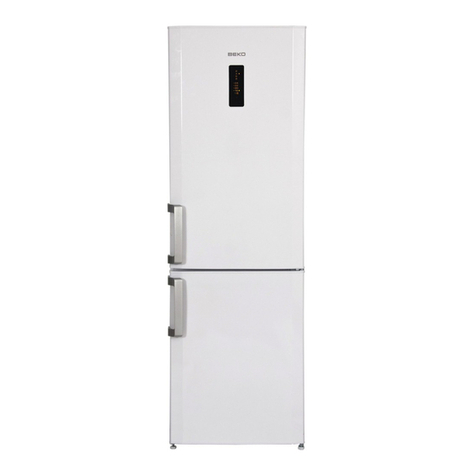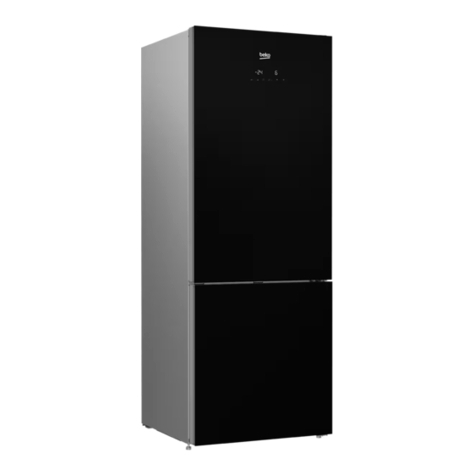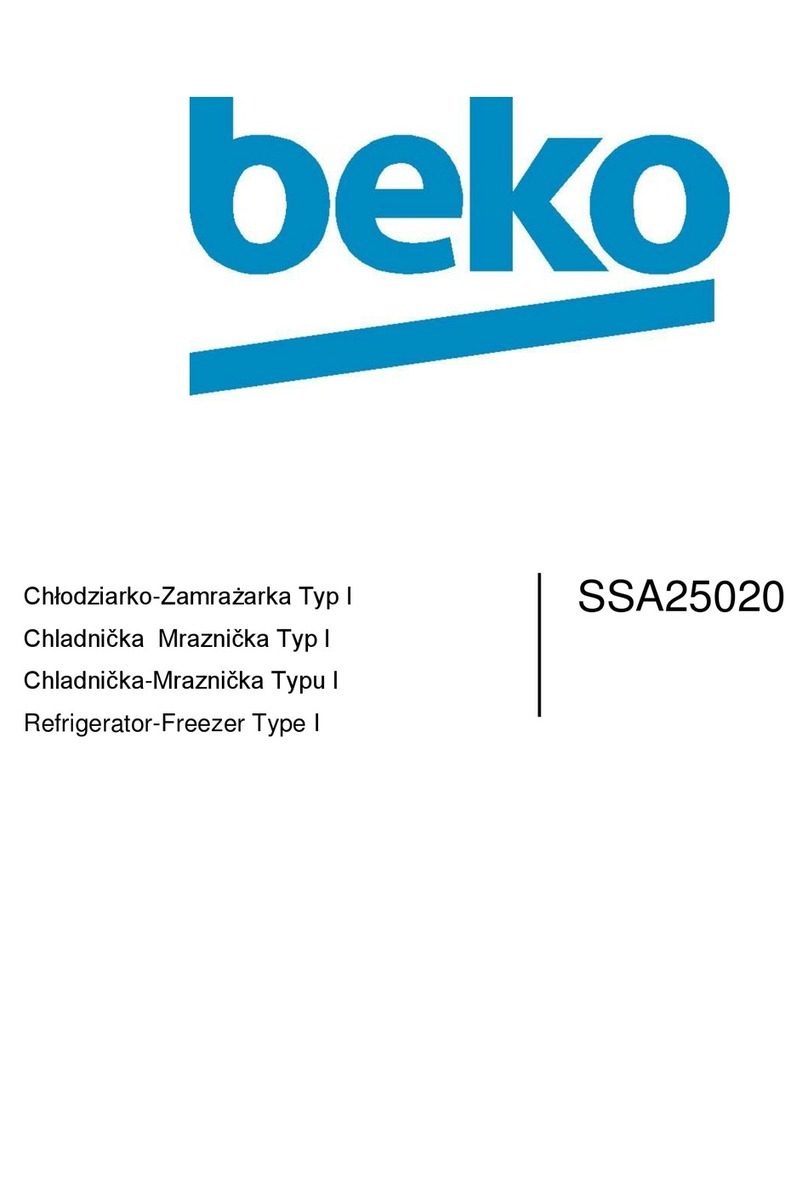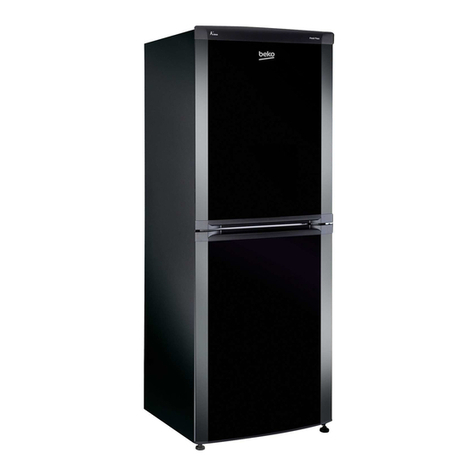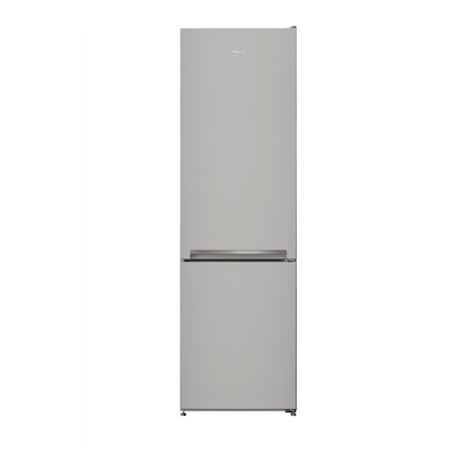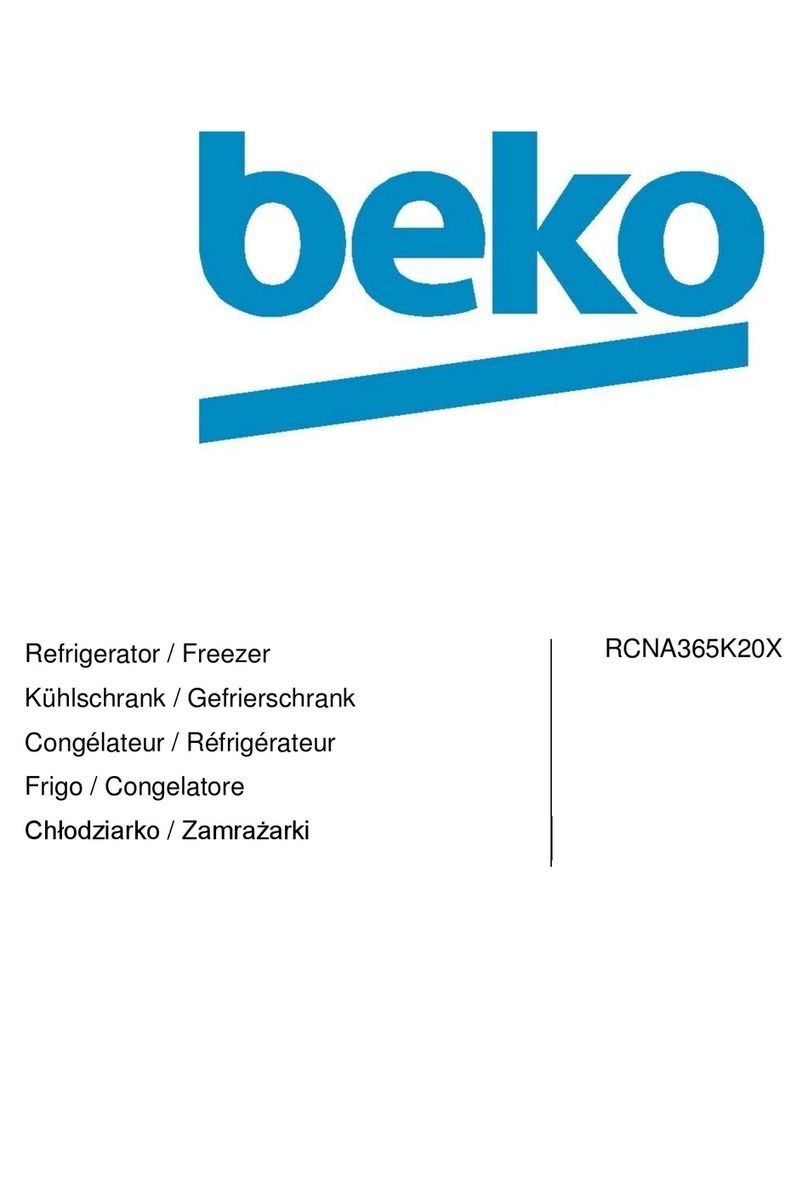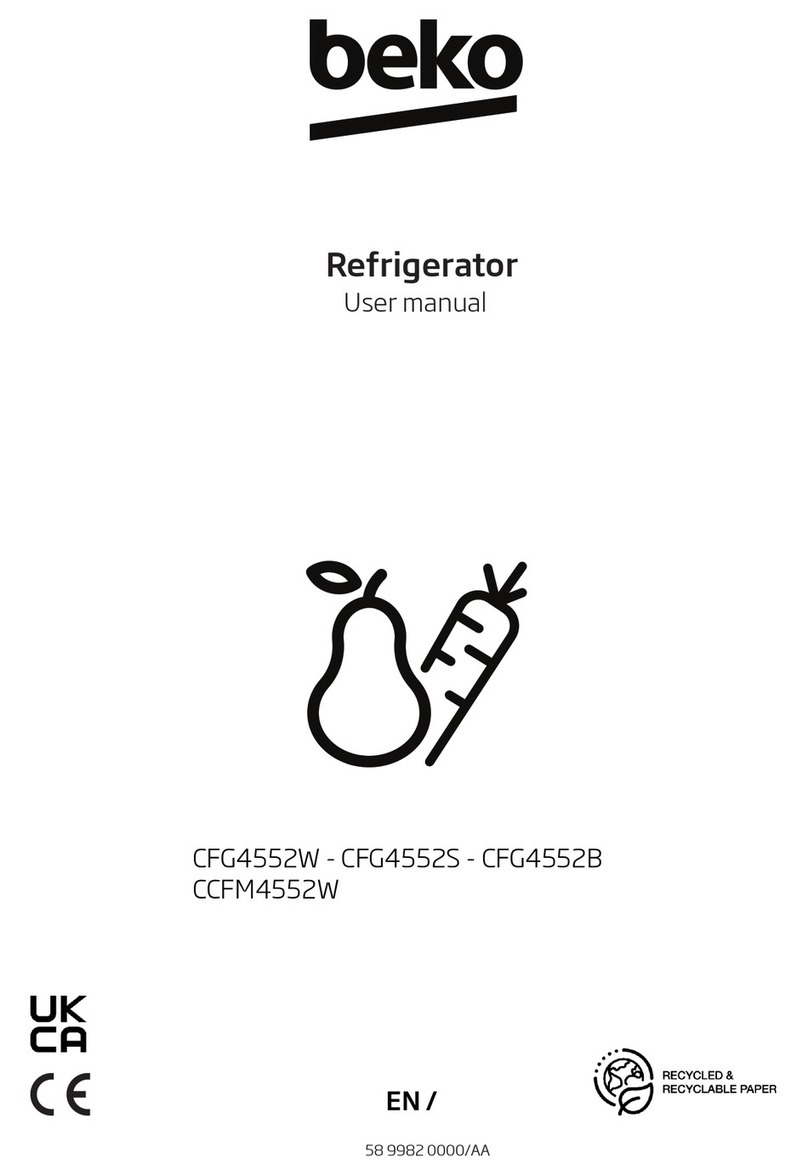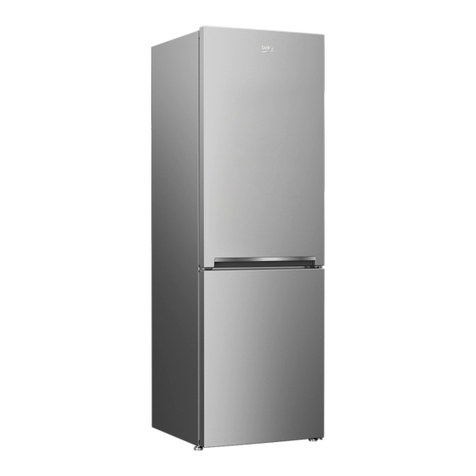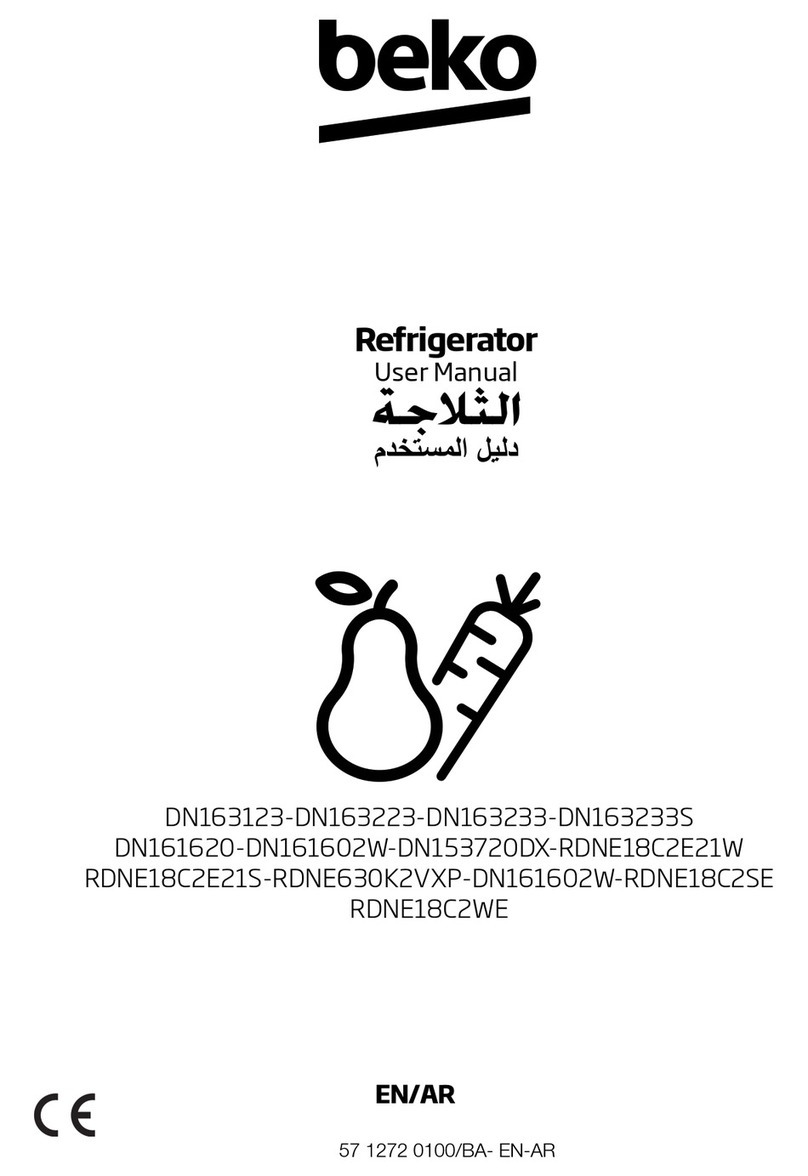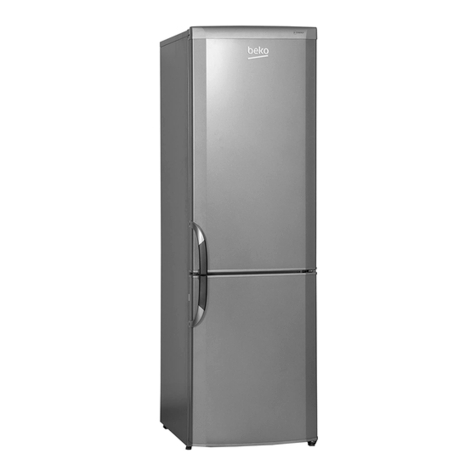Instruction ManualGB
2
Electrical requirements
Before inserting the plug into the wall socket
make sure that the voltage and the frequency
shown in the rating plate inside the appliance
corresponds to your electricity supply.
Ensure that the plug remains readily accessible.
Do not use multiple adapter bar or extension
cable.
Warning! This appliance must be
earthed.
Repairs to electrical equipment should only be
performed by a qualified technician. Incorrect
repairs carried out by an unqualified person
carry risks that may have critical consequences
for the user of the appliance.
• Do not dispose of the appliance on a fire.
At , the care and protection of our
environment is an ongoing commitment. This
appliance which is among the latest range
introduced is particularly environment friendly.
Your appliance contains non CFC/HFC natural
substances in the cooling system (called R600a)
and the insulation (called cyclopentane) which
are potentially flammable if exposed to fire.
Therefore, take care not to damage, the cooling
circuit/ pipes of the appliance in transportation
and in use. In case of a damage do not expose
the appliance to fire, potential ignition source
and immediately ventilate the room where the
appliance is situated.
• We suggest you contact your local authority
for disposal information and facilities available.
WARNING- Keep ventilation openings, in the
appliance enclosure or in the built-in structure,
clear of obstruction.
WARNING- Do not use mechanical devices
or other means to accelerate the defrosting
process, other than those recommended by the
manufacturer.
WARNING- Do not damage the refrigerant
circuit.
WARNING- Do not use electrical appliances
inside the food storage compartments of the
appliance, unless they are of the type
recommended by the manufacturer.
Transportation
instructions
1. The appliance should be transported only
in upright position. The packing as supplied
must be intact during transportation.
2. If during the course of transport the appliance,
has been positioned horizontally, it must not
be operated for at least 4 hours, to allow the
system to settle.
3. Failure to comply with the above instructions
could result in damage to the appliance, for
which the manufacturer will not be liable for.
4. The appliance must be protected against
rain, moisture and other atmospheric influences.
Important!
• Care must be taken while cleaning/carrying
the appliance not to touch the bottom of the
condenser metal wires at the back of the
appliance, as this could cause injury to fingers
and hands.
• Do not attempt to sit or stand on top of your
appliance as it is not designed for such use.
You could injure yourself or damage the
appliance.
• Make sure that the mains cable is not caught
under the appliance during and after moving,
as this could damage the cable.
• Do not allow children to play with the
appliance or tamper with the controls.
Installation instructions
1. Do not keep your appliance in a room where
the temperature is likely to fall below 10 º C
(50 º F) at night and/or especially in winter,
as it is designed to operate in ambient
temperatures between +10 and +32 º C (50
and 90 º F). At lower temperatures the appliance
may not operate, resulting in a reduction in the
storage life of the food.
2. Do not place the appliance near cookers




